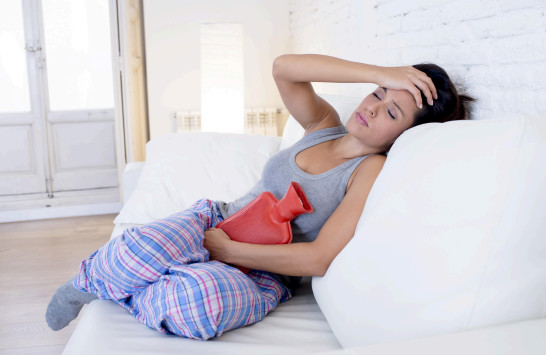
Menstrual pain (dysmenorrhea) and PMS (premenstrual syndrome) affect many women worldwide. While these symptoms are common, they should not be dismissed as normal if they significantly impact your quality of life. Fortunately, various treatment options, including lifestyle changes and nutraceutical supplementation, can help alleviate these symptoms and improve overall well-being.
Managing PMS Symptoms
PMS symptoms typically occur during the luteal phase or menstruation and may include fatigue, bloating, breast tenderness, menstrual cramps, cravings, appetite changes, mood swings, and irritability. Here are some strategies to help reduce their intensity:
● Limit Alcohol, Caffeine, and High-Sodium Foods: Reducing or avoiding these foods before your period can help alleviate symptoms. Alcohol may worsen breast tenderness and mood changes, caffeine can intensify mood swings, and high sodium intake can contribute to bloating.
● Engage in Regular Physical Activity: Yoga and aerobic exercises, such as walking, can reduce stress, anxiety, and the severity of menstrual pain by improving circulation and promoting relaxation.
● Optimize Nutrition: Increase your intake of complex carbohydrates, fruits, vegetables, magnesium-rich foods, and calcium-rich foods. These nutrients can help reduce fatigue, cramps, and mood fluctuations.
● Eat Balanced Meals: Ensure adequate protein and fiber in your meals to help regulate blood sugar levels, and carb cravings and stabilize mood.
● Prioritize Sleep: Sufficient rest is crucial for maintaining energy levels and reducing mood disturbances.
● Practice Mindfulness Techniques: Journaling, deep breathing, and meditation can support your emotional well-being, lower stress, and reduce anxiety.
● Consider Nutritional Supplements (Under Professional Supervision): Chastetree (Vitex), Magnesium, Calcium, Vitamin B6, and Vitamin D can help balance your hormones, and alleviate several PMS symptoms.
Managing Menstrual Pain
Menstrual pain can be classified as either primary or secondary dysmenorrhea. Secondary dysmenorrhea is often linked to conditions such as endometriosis or adenomyosis, and its treatment may differ. Here are some ways to manage menstrual pain:
1. Avoid Inflammatory Foods: Processed foods, refined sugars, alcohol, and other inflammatory foods can exacerbate pain and should be minimized.
2. Incorporate Stress-Reduction Techniques: Mindfulness practices can help regulate cortisol levels, reduce inflammation, and reduce menstrual pain.
3. Use Heat Therapy: Applying a heating pad to the abdomen can relieve cramps.
4. Try Castor Oil Massage: Massaging castor oil on the abdomen may help, but it may not be suitable for those with heavy periods or diarrhea.
5. Consider Supplements (Under Professional Supervision): Ginger, Magnesium, and Omega-3 can reduce inflammation, and significantly alleviate menstrual cramps.
If your menstrual pain is severe, persistent, or unresponsive to pain medication—especially if it occurs outside of menstruation—it may be necessary to investigate potential underlying causes. Diagnostic measures such as a transvaginal ultrasound and blood tests (assessing thyroid function, hormone levels, Vitamin D, and iron) can provide valuable insights.
If PMS symptoms and menstrual pain are affecting your quality of life, a holistic approach that supports your body balances your hormones, and optimizes lifestyle choices can be beneficial. Let’s embark on your health journey together!
Dr. Ishani Patel
Contact Me


